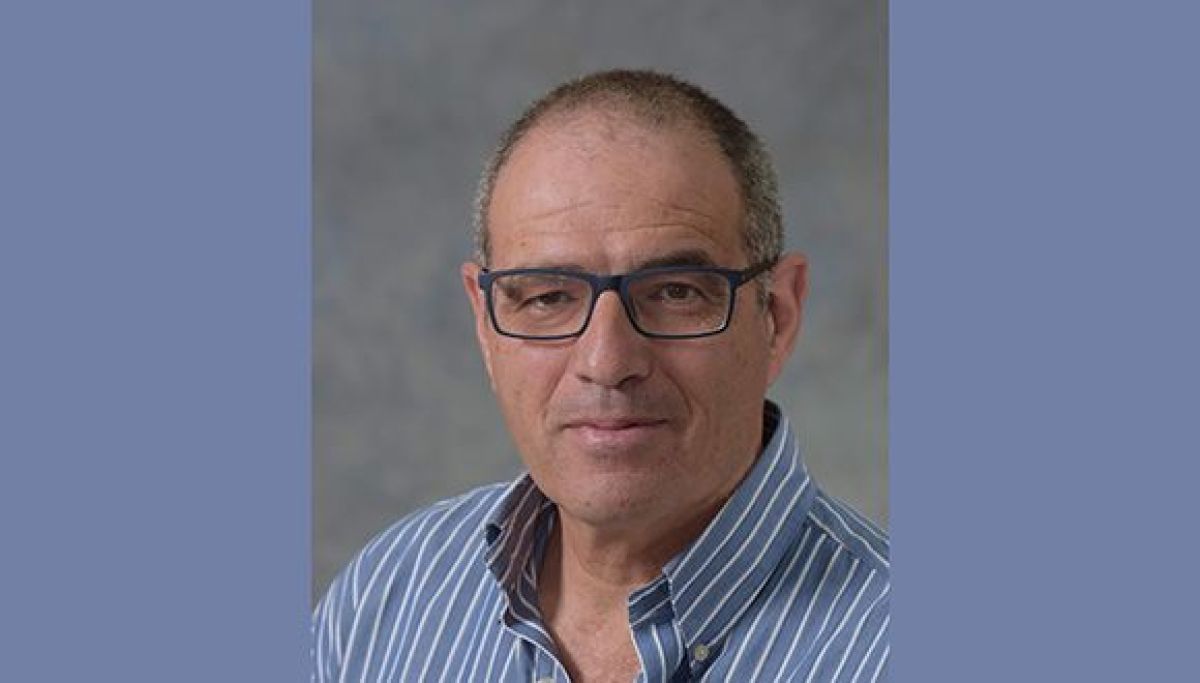Seeing the World in New Colors
A New Technology Allows to See and Capture on Camera Colors Unseen by the Human Eye
A new development of Tel Aviv University will allow us to identify on a “standard” camera, colors that the human eye and even ordinary cameras are unable to pick up. Among other things, the new technology will make it possible to image gases such as hydrogen, carbon and sodium, each of which has a unique color in the infrared or different biological substances that are found in nature but are “invisible” in the visible. The new technology has groundbreaking applications in a variety of fields – from everyday life, gaming and photography, through security, medicine and ending with remote sensing satellites in space.
Beyond what the eye sees
The groundbreaking research was conducted by Dr. Michael Mrejen, Yoni Erlich, Dr. Assaf Levanon and Prof. Haim Suchowski from the Department of Physics of Condensed Material at Tel Aviv University. The results of the study were recently published in the peer-reviewed journal “Laser & Photonics Reviews”.
“The human eye picks up photons at wavelengths between 400 nanometers – the blue color, and 700 nanometers – the red color,” explains Dr. Mrejen. “But it is only a tiny part of the electromagnetic spectrum, which also includes radio waves, microwaves, X-rays and more. Below 400 nanometers there is ultraviolet radiation, or UV, and above 700 nanometers there is the infrared radiation, which itself is divided into near, mid and far infrared. “In each of these parts of the electromagnetic spectrum there is a great deal of information on materials encoded as “colors” that has until now been hidden from view.” The researchers explain that the color in these parts of the spectrum is of great importance, since many materials have a unique signature, expressed as color, in the mid infrared range. Thus, for example, cancer cells could be easily detected as they have a higher concentration of molecules of a certain type. Existing infrared detection technologies are expensive and mostly unable to render those “colors”. In medical imaging, experiments have been performed in which infrared images are converted into visible light to identify the cancer cells by the molecules. To date, this conversion has been done color by olor and this required very sophisticated and expensive cameras, which were not necessarily accessible in the civil sector . In the study, the researchers were able to develop cheap and efficient technology that could mount on a standard camera and in fact allows for the first time to convert the photons of light from the entire mid infrared region to the visible region, at frequencies that the human (and standard camera) can pick up.
New colors. The technology that will change the way we see the world
The fingerprint of a color
“In the mid infrared, there is a one-to-one relationship between materials and their mid-infrared “colors”, especially organic molecules,” explains Prof. Suchowski. “Meaning, different materials have a different ‘fingerprint’ color. We humans see between red and blue. If we could see in the infrared realm, we would see that elements like hydrogen, carbon and sodium have a unique color. An environmental monitoring satellite that would take a picture in this region would see a pollutant being now emitted from a plant, or a spy satellite would see where explosives or uranium are being hidden. In addition, since every object emits heat in the infrared, all this information can be seen even at night.”
After registering a patent for their invention, researchers from Tel Aviv University are currently developing the technology through a grant from the Innovation Authority’s KAMIN project, and they have already met with a number of companies – Israeli and Globao. “In the future we will be able to offer a device based on our unique crystal at a cost of a few hundred dollars, which could also be mounted on an iPhone – then everyone will be able to see at night, in colors not seen so far, providing an unimaginable wealth of information on our surroundings” concludes Prof. Suchowski.











 Photo: Adi Orni
In addition to her radio show and Back of the Nation, she hosts the Israeli version of the BBC TV program Room 101, in which she interviews Israeli personalities about their biggest fears or pet peeves. She also lectures about humor and writes newspaper columns. She recently produced a documentary about the anti-aging industry.
Galili is one of several well-known female comedians in Israel, but women are still the minority in the field. An avowed feminist, she says that she insists on having at least one female writer on the Back of the Nation team. What separates her from her male counterparts, she says, are the jokes she doesn’t make. She will never make a joke about a woman being old or ugly or fat, she says. ”It’s not in my agenda.”
Photo: Adi Orni
In addition to her radio show and Back of the Nation, she hosts the Israeli version of the BBC TV program Room 101, in which she interviews Israeli personalities about their biggest fears or pet peeves. She also lectures about humor and writes newspaper columns. She recently produced a documentary about the anti-aging industry.
Galili is one of several well-known female comedians in Israel, but women are still the minority in the field. An avowed feminist, she says that she insists on having at least one female writer on the Back of the Nation team. What separates her from her male counterparts, she says, are the jokes she doesn’t make. She will never make a joke about a woman being old or ugly or fat, she says. ”It’s not in my agenda.”


 We must also recognize that science is global and universal. It is one of the few fabrics that connects the world and brings us all together. Especially in the world now, when people are feeling separated from each other due to the COVID-19 crisis, I think science is one of those elements that brings us all together.
Photo (left): The Milners at a TAU event in honor of the 70 for 70 Initiative. Credit: Yehonatan Zur.
What lies behind your idea that scientists should be compensated like celebrities?
In today’s world, recognition is based on either celebrity status or financial wealth. Few people are celebrated for their intellectual achievements. What the Breakthrough Prize is trying to achieve is to bring about a more balanced world whereby intellectual achievement will be celebrated at least on par with other achievements, and where scientists will receive the recognition they deserve. We thought that celebrating the most brilliant minds could maybe inspire kids interested in science to pursue an academic career.
What advice would you give to young Israeli scientists who dream of changing the world?
Although I tried for a number of years to do this myself, I wasn’t too successful. My advice would be contrary to my own experience – try to focus on fundamental science. If you put your name on a building, that building will not survive over hundreds of years. But if you make a scientific discovery, this is something that cannot ever be undone. In a thousand years from now, Einstein will still be remembered for his theory of general relativity, while many other great men will be forgotten. So if you really want to leave a lasting legacy for our civilization, the only sure way is through fundamental science and making discoveries.
I envy people who choose basic science as their occupation. Not being able to make a contribution myself, I am trying to focus our foundation on supporting those who can.
Tell us about your connection to Israel and making Aliyah.
I became an Israeli citizen over 20 years ago. This was really an important calling for me because, growing up in the Soviet Union, I had limited ability to connect with my heritage and ancestors in a meaningful way. As soon as it was possible, I decided to become an Israeli citizen and, to the extent possible, to contribute to the State of Israel.
Featured image: Yuri and Julia Milner. Courtesy of Yuri and Julia Milner.
We must also recognize that science is global and universal. It is one of the few fabrics that connects the world and brings us all together. Especially in the world now, when people are feeling separated from each other due to the COVID-19 crisis, I think science is one of those elements that brings us all together.
Photo (left): The Milners at a TAU event in honor of the 70 for 70 Initiative. Credit: Yehonatan Zur.
What lies behind your idea that scientists should be compensated like celebrities?
In today’s world, recognition is based on either celebrity status or financial wealth. Few people are celebrated for their intellectual achievements. What the Breakthrough Prize is trying to achieve is to bring about a more balanced world whereby intellectual achievement will be celebrated at least on par with other achievements, and where scientists will receive the recognition they deserve. We thought that celebrating the most brilliant minds could maybe inspire kids interested in science to pursue an academic career.
What advice would you give to young Israeli scientists who dream of changing the world?
Although I tried for a number of years to do this myself, I wasn’t too successful. My advice would be contrary to my own experience – try to focus on fundamental science. If you put your name on a building, that building will not survive over hundreds of years. But if you make a scientific discovery, this is something that cannot ever be undone. In a thousand years from now, Einstein will still be remembered for his theory of general relativity, while many other great men will be forgotten. So if you really want to leave a lasting legacy for our civilization, the only sure way is through fundamental science and making discoveries.
I envy people who choose basic science as their occupation. Not being able to make a contribution myself, I am trying to focus our foundation on supporting those who can.
Tell us about your connection to Israel and making Aliyah.
I became an Israeli citizen over 20 years ago. This was really an important calling for me because, growing up in the Soviet Union, I had limited ability to connect with my heritage and ancestors in a meaningful way. As soon as it was possible, I decided to become an Israeli citizen and, to the extent possible, to contribute to the State of Israel.
Featured image: Yuri and Julia Milner. Courtesy of Yuri and Julia Milner.

